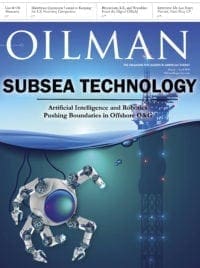The United States is the leading natural gas producer in the world. Shale has virtually eliminated our need for gas imports and continues to produce well; in fact, very well in the Delaware and Eagle Ford Basin. The Bakken is seeing improvement and the Niobrara region continues to perform well in the Denver Basin after two years of falling production. In our last issue we profiled Louisiana’s oil and gas market. The Haynesville Basin in northwest Louisiana continues to outshine the southern inland water and offshore oil and gas market.
The feature in this issue dives into subsea technology, and while onshore producers are doing well, what about offshore E&P and its long-term future in the U.S.? Deepwater GOM producers have more financial, development and operating challenges to overcome than their onshore counterparts. The capital involved to explore, produce and operate an offshore well is significantly more than shale. Over the last few years of lower crude prices, offshore producers were forced to cancel projects and reduce their workforce to survive. Now, most offshore operators are minimizing their investment in new fields and instead investing in existing producing assets or brownfields. They have determined that enhanced oil recovery technology is a better investment than risking large capital outlays into deepwater exploration that can take years to bring online and recoup investment. As a result, the Gulf of Mexico has seen a decline in new producing fields, which in turn decreases growth for the entire oilfield equipment industry that relies on the GOM region for revenue. For now, oilfield service companies are relying on the scarce brownfield expansions to survive.
A bright spot for future offshore development is the announcement by President Trump to open up oil and gas exploration in the Atlantic and Pacific continental shelves. If the plan proposed by the Trump administration survives court challenges, which are expected, we could see the first offshore lease go on sale in 2020.
The CEO of U.S. Energy Media, Emmanuel Sullivan is a technical writer who has built up his profile in the oil and gas industry. He lives and works in Houston, where he publishes Oilman and Oilwoman on a bimonthly basis, and Energies quarterly, distributing the magazine to energy thought leaders and professionals throughout the United States and around the world. At a time when technology is rapidly changing, he provides an invaluable service to oil & gas, and renewable energy executives, engineers, and managers, offering them both broad and specific looks at the topics that affect their livelihoods. Sullivan earned his BA in Communications at Thomas Edison State University and his MA in Professional Writing at Chatham University.






